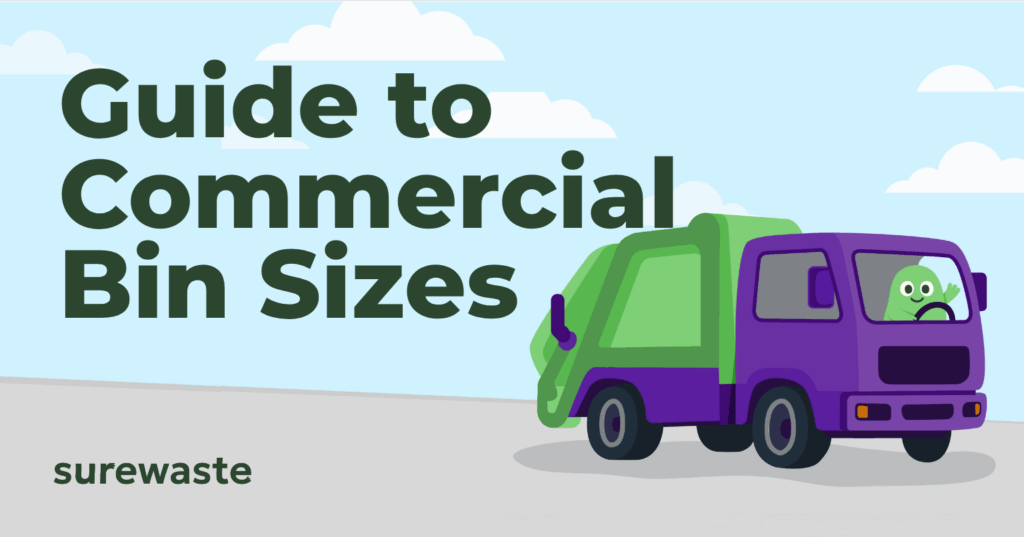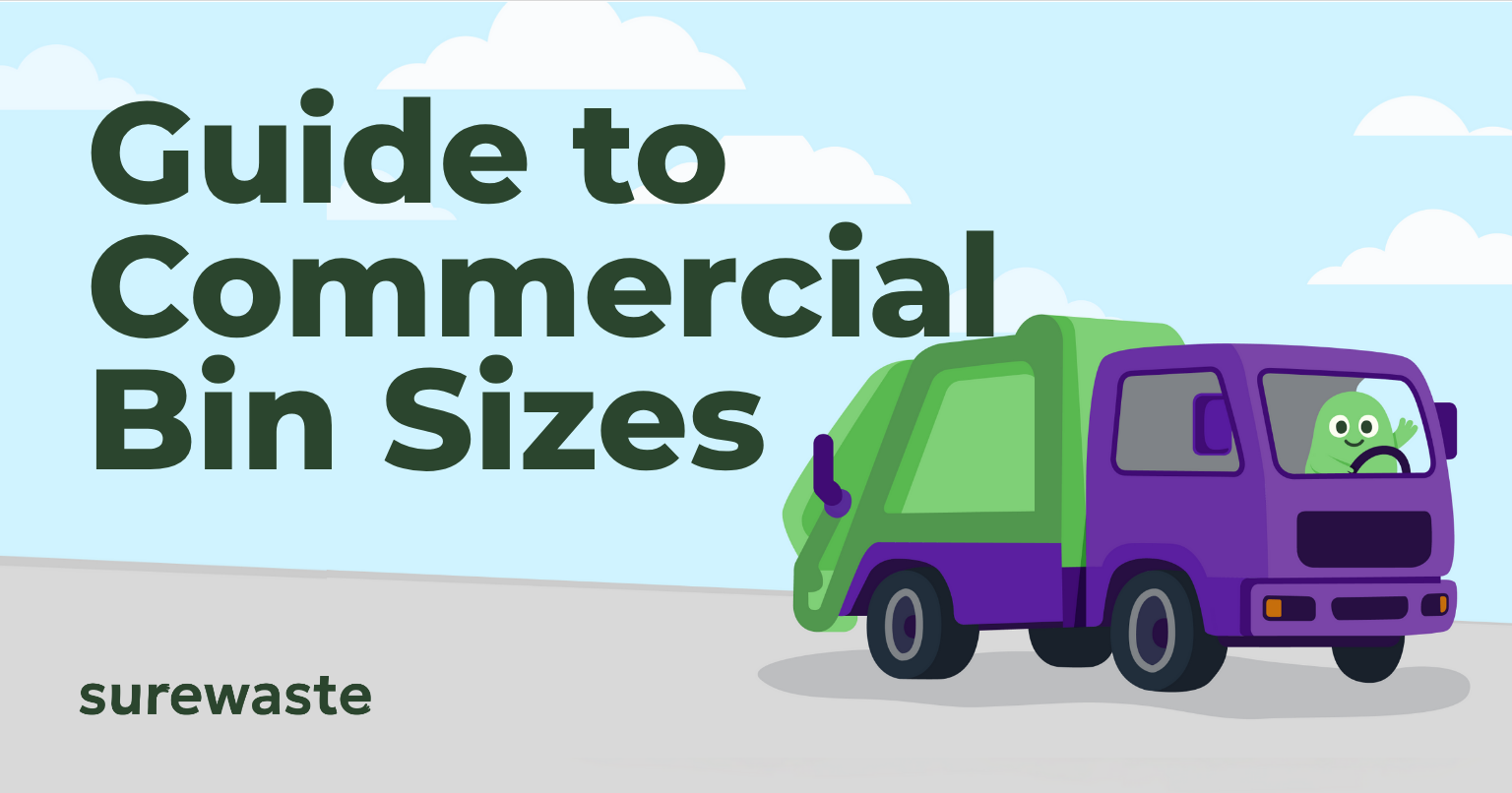Guide to Commercial Bin Sizes: Dimensions & More

Picking the right commercial bin is all about making your waste collections more efficient, staying compliant, and keeping costs down, rather than just having a place to put all your rubbish. In this guide, we’ll break down the most common UK bin sizes, what they’re best for, and how to choose the right fit for your business.

What Are the Standard Bin Sizes for Businesses?
Understanding what commercial wheelie bin sizes there are and what other commercial bin dimensions are frequently used can make waste management smoother and more cost-effective. Here’s a quick rundown of the most common commercial bin sizes and dimensions used across the UK:
240L Wheelie Bin
- Dimensions: Approx. 107cm (H) x 58cm (W) x 74cm (D)
- Capacity: 240 litres
- Best for: General waste, dry mixed recycling, glass, or food waste
- Ideal for: Small shops, cafés, hair salons – any business with limited space or low waste output
- Collection frequency: Typically weekly or fortnightly
660L Bin
- Dimensions: Approx. 120cm (H) x 137cm (W) x 77cm (D)
- Capacity: 660 litres
- Best for: Mixed recycling, general waste, cardboard
- Ideal for: Medium-sized retail units, takeaways, pubs and offices
- Collection frequency: Can handle more volume, so suitable for less frequent pickups
1100L Bin
- Dimensions: Approx. 137cm (H) x 124cm (W) x 98cm (D)
- Capacity: 1100 litres
- Best for: High-volume general waste or recycling
- Ideal for: Large restaurants, hotels, small industrial units, shared premises
- Collection frequency: Great for businesses needing fewer collections but generating a lot of waste
Skips (Various Sizes)
- Common sizes: 6-yard (holds about 60-70 bin bags), 8-yard (up to 80-90 bags)
- Best for: Bulky items, construction waste, large one-off clearances
- Ideal for: Builders, refurbishment projects, seasonal clear-outs

How Do You Know What Size You Need?
Choosing the right bin size starts with understanding your waste.
Think about what types of rubbish you produce – food, recycling, general waste – and roughly how much of it builds up each week. If you’ve got limited space or tricky access, that’s important too.
Collection frequency also plays a big part. Some businesses prefer smaller bins with more frequent pickups, while others need larger bins emptied less often. It’s all about finding the balance that suits your setup and keeps things running smoothly.

Not Sure What to Choose? You Don’t Have to Guess.
Working out the right bin setup can feel like trial and error – but it doesn’t have to be. The best commercial waste providers assess things like your waste types, volumes, collection frequency, and on-site space to create a setup that actually works.
The goal is to achieve a setup that’s cost-effective, compliant, and easy to manage – so you can focus on running your business, not worrying about your bins.
If you’re unsure what makes sense for your site, Surewaste can help you figure it out. Try our savings calculator to benchmark typical costs, or request a quote to get tailored insights based on your setup.

